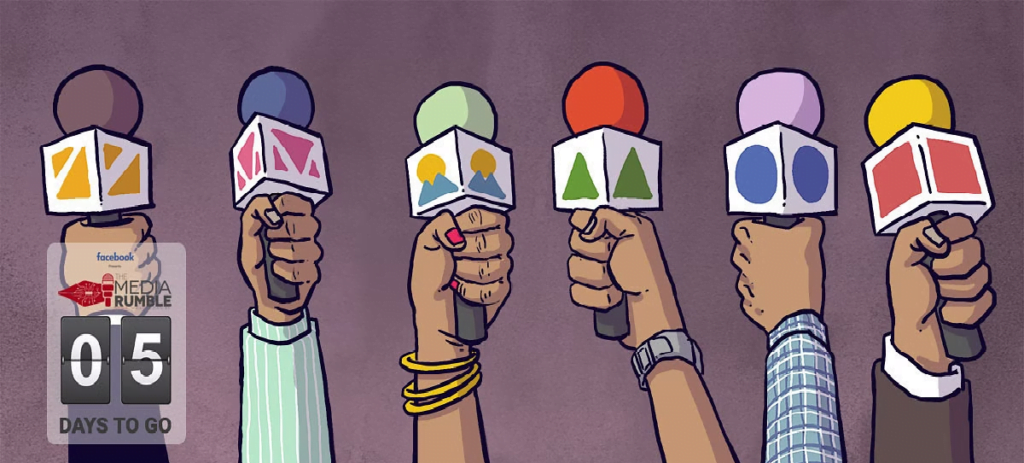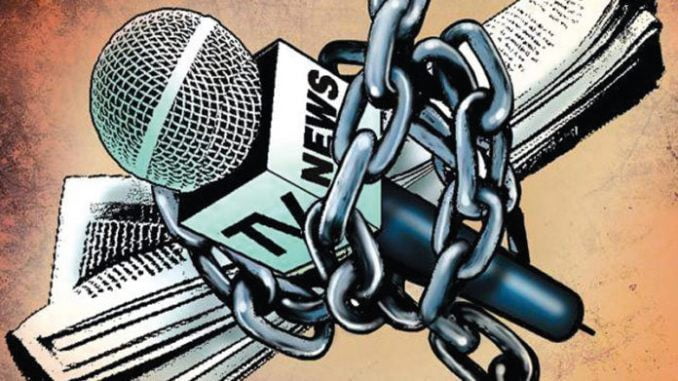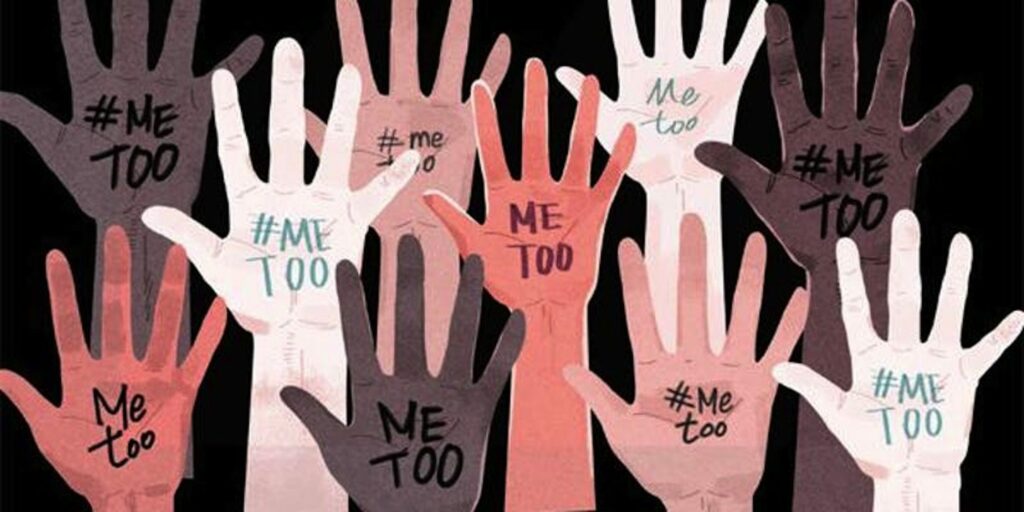Editor’s Note: FII’s #MoodOfTheMonth for January 2023 is Gender And Journalism. We invite submissions on this theme throughout the month. If you would like to contribute, kindly refer to our submission guidelines and email your articles to shahinda@feminisminindia.com
Journalism is often characterised as a field that, at its height, prides itself on being impartial in its approach. Reporting real-world issues through facts and figures has solidified the industry at large to provide a balanced and informative narrative to the masses. However, this approach has often failed to take into account the larger socio-cultural structures we live within in our everyday lives, and how the various institutions we operate under the influence of the climate in which these real-world issues take place.
Given the global significance of patriarchal authority in particular, it is perhaps more counterintuitive to the goal of an egalitarian reportage to pretend otherwise by rejecting the inclusion of feminist analysis in the fold.
This can be reasonably attributed to the fact that, for a large part of modern history, journalism has been saturated by men and their perspectives on global events. Even today, when the Global Media Monitoring Project, in collaboration with the Network of Women in Media in India (NWMI), conducted a study on the presence of women in news as both subjects and sources, the percentage has dropped sharply in print, TV, and radio. The most relevant discovery in the given study to the topic at hand was that between 2015 and 2020, female journalists had gone down from 43% to 13% in print, and 60% to 52% on TV.
Also Read: The Many Dangers Of Being A Woman Journalist In Kashmir
In the latter category, the large majority of women worked as reporters, announcers, and presenters on TV at a whopping 52% compared to other roles in other mediums. This can be easily attributed to the long-standing practice of positioning, usually younger, women as the “talking heads” in the equation, with the men being granted access to more high-profile, and professionally demanding, roles in the field that allow them to climb up the ladder and accrue respect and notoriety in the industry.

Even the choice of which stories are to be reported upon, to begin with, has rested upon the approval of the men in charge, leaving a gaping hole in our history of reported stories when it comes to issues of relevance to the female members of our population. With women serving as sources only in certain instances, as victims of gender-based violence primarily, they are rarely reported upon in other categories. In 2015, women were the subjects of 27% of all stories, and spokespersons at 15% or experts at 12%, whereas in 2020, their numbers reduced from the already sparse aforementioned percentages to being the subjects of only 18% of all stories, and being presented in the roles of spokespersons or experts at an abysmal 8%.
Also Read: Women Journalists: Reporting Loss From The Global South
Journalism as a feminist effort
Given the aforementioned facts and figures, how are we to champion journalism as the last bastion of parity in the modern world, when half our country’s population is neglected by it? We cannot expect an improvement in the status of women at large without bringing knowledge of women’s problems and perspectives to the masses. This is where feminist perspectives come into play.
A universal female experience is a concept that can be easily disputed on the grounds of intersectional divisions between women on the basis of class, caste, sexuality, and so on. However, it would be disingenuous to suggest that a woman’s perspective won’t differ drastically from a man’s, based on the unique experiences that women are socialised by, under the patriarchy, that go on to further diverge from each other when influenced by a variety of socio-cultural factors. If we were to isolate any given collective of female journalists, there would be both dissenting and assenting voices to be heard and true unanimity would be unlikely. What this goes to show is that a higher number of female journalists would lead to a higher number of diverse female perspectives on any given issue.
How one woman would report a particular issue, would perhaps not be the same as another woman would. Such has been the long-standing practice within journalism between men, and the industry would lag behind by failing to permit a variety of women the chance to embody similarly competing roles as well and thus providing uniquely valuable perspectives within the field.

The feminist act of opening the doors to more women is the only path that can lead to feminist perspectives that will benefit the masses in their understanding of women’s standing in our current climate as it continues to evolve.
Reporting without a feminist perspective
Many reporters especially male reporters of mainstream media in the country have been reporting gender-based violence against women as a slight on the part of the victim, rather than as a crime committed by the perpetrator. This is done by insinuating that it is the role of the women, in any given situation, to be taking precautions to prevent such gender-based violence and choosing to provide additional information, to the readership of these newspapers, to establish a pattern of behaviour based on the victim’s past rather than the perpetrator’s.
Many male reporters from these media organisations have even gone as far as to dedicate a portion of their reporting and prime-time debates to speculating on the credibility of these allegations of gender-based violence, especially sexual violence, operating under the commonly held belief within traditional society that victims of sexual violence are oftentimes lying for financial or social gain when the real outcome of these situations is rarely in favour of the victims.

There has also been a trend of over-reporting cases of gender-based violence where the perpetrator is a stranger to the victim as compared to someone that they know. This can be rooted in an agenda to dissuade women from leaving the safety of their homes, unaccompanied, to stave away the threat of predators lurking in the dark, while failing to account for those that walk among them, when statistics have shown time and time again that in most cases of gender-based violence, the perpetrator is often a male relative, often a husband.

These examples reflect the effects of a lack of feminist perspectives that continue to persist in the media organisations which have the most reach within the Indian subcontinent. Though we have seen a rise in independent media organisations that offer teams of female journalists and their respective feminist views to the masses, they are largely restricted to a relatively small yet dedicated readership. It is unfortunate that those who have the power to start taking chances and offering opportunities to female journalists in mainstream media, to make their voices heard by a larger audience, choose to turn a blind eye to an otherwise simple solution out of a fear of upsetting the traditional sexual division of labour within the industry.
Reporting with a feminist perspective
Though the historic rise of the #MeToo movement has been heavily documented in the Western world, it wasn’t until the existing pool of female journalists started sharing their stories, and platforming others’ stories, that the movement began to gain ground in the Indian subcontinent. While the longevity of the movement and its impact on material reality is a different debate, there is no disputing the role that female journalists have played in influencing a change in the way we talk about gender-based violence in our country. These are the building blocks upon which the succeeding generation(s) of female journalists can strive to remedy the current climate surrounding the reporting of a variety of relevant issues by bringing feminist perspectives to the table and expanding the larger conversation around how these stories are to be reported.
Also Read: #MeToo Hits Indian Media – Women Journalists Are Sharing Their Stories of Workplace Harassment

While many of these mainstream conversations surrounding the present, and the foreseeable future, of female journalists in India, are largely concerned with the plight of middle to upper-class women coming from upper-caste backgrounds, this discussion would be remiss to not mention the journalistic progress made by less privileged women working under NGOs to bring about a change in the lives of women in rural India.
Also Read: India And Its #MeToo Movement In 2020: Where Are We Now?
Organisations such as Khabar Lahariya, #GenderAnd, Genderlog, and others, present a force of female journalists to be reckoned with.
It is only through the courage displayed by female journalists as they go out into the field with their experiences and ideals that we can expect feminist perspectives to come to the forefront of modern-day reporting in the Indian subcontinent.
About the author(s)
Tanya Roy is a 20-year-old student at FLAME University in Pune, with a major in Film & Television Management and a minor in Literary & Cultural Studies. She is interested in critiquing and analysing art in its different mediums through a feminist lens and is an avid reader of feminist and other sociocultural theories.






